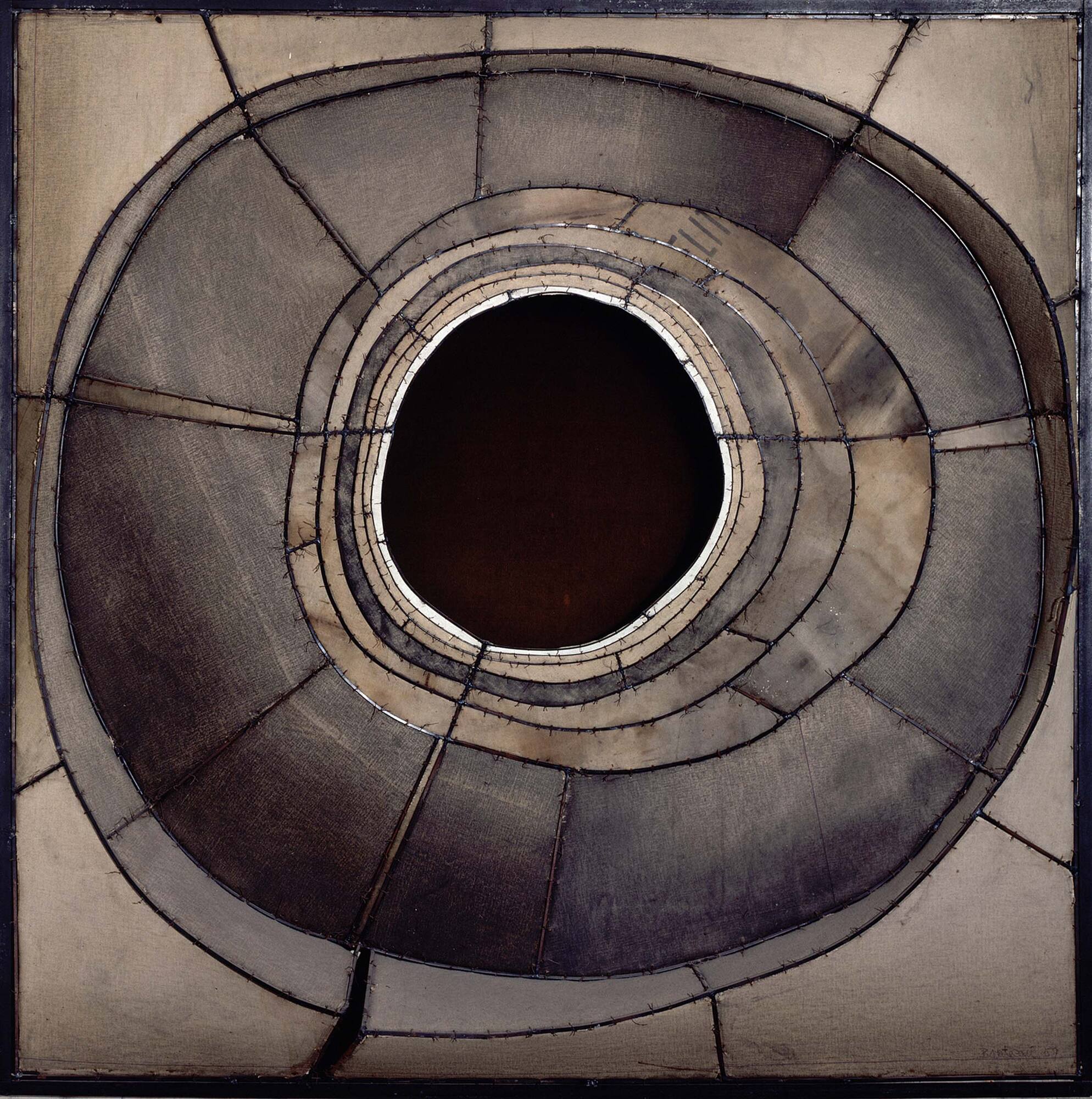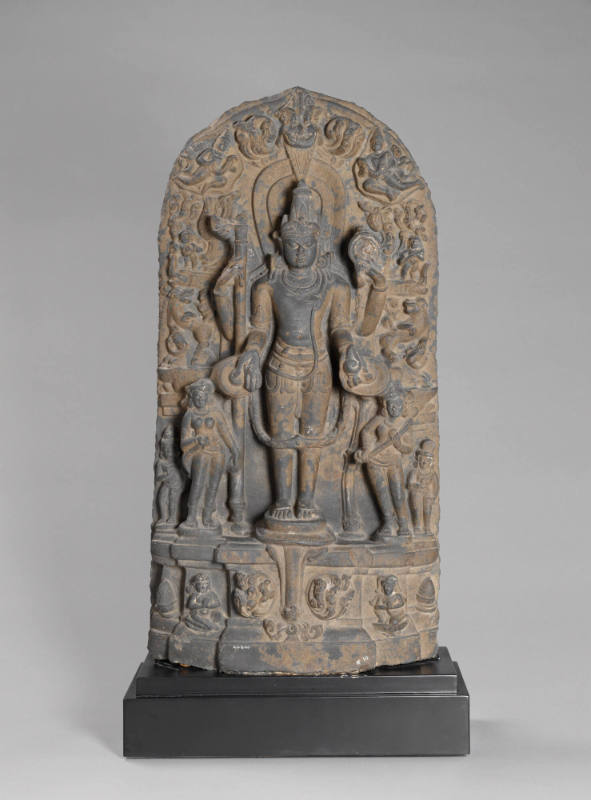
Object Details
Artist
Lee Bontecou
Date
1959
Medium
Welded iron, canvas, wire, and velvet
Dimensions
65 × 65 × 11 inches (165.1 × 165.1 × 27.9 cm)
Credit Line
Anonymous gift through the American Federation of Arts, Museum Donor Program
Object
Number
59.140
Born in Providence, Rhode Island, and raised in Nova Scotia, Lee Bontecou began studying sculpture i(…)
Born in Providence, Rhode Island, and raised in Nova Scotia, Lee Bontecou began studying sculpture in New York City from 1952 to 1955 with William Zorach. After she won a Fulbright Fellowship to Rome in 1957 and 1958, and the Louis Comfort Tiffany Award in 1959, she embarked on a successful career in which she challenged artistic conventions of both materials and presentation in such works as this. Conceived like a sculpture but hung on the wall like a painting, Bontecou surprised many viewers with her early works, because of her use of industrial materials like screen, pipe, burlap, canvas, and wire. These constructions or assemblages were aptly characterized by critics like Carter Ratcliff as “organic machines” because Bontecou’s work evoked not only the mechanical, with its use of manufactured materials, but also the biological, with the biomorphic forms these works suggested. Bontecou relates to the work of Richard Stankiewicz and, later, Mark di Suvero. In her later work, she abandoned burlap and screen for vacuum-formed plastics, another industrial material, creating fish and flower forms that contain, in their tendrils and preying appearance, the same sense of menace as her earlier works. (Revised from “A Handbook of the Collection: Herbert F. Johnson Museum of Art,” 1998)












